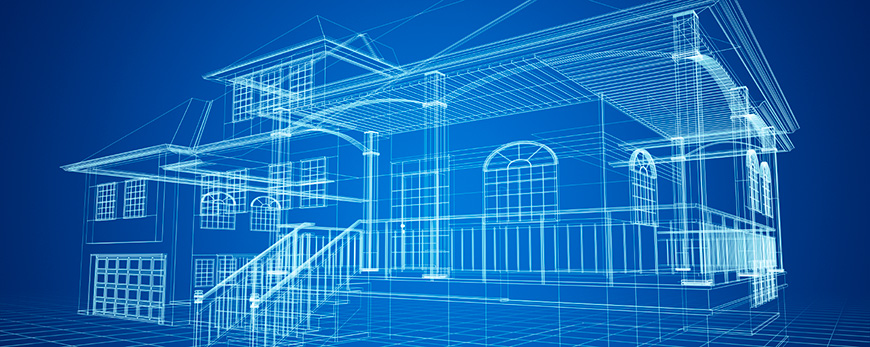Understanding the Collaborative Refine In Between Architects and Designers in Modern Building And Construction Projects
The collective process in between designers and engineers is vital in modern building jobs, as it harmonizes design intent with design feasibility. Discovering these dynamics reveals insights that can significantly affect task results and general sector requirements.
The Significance of Cooperation
The collective harmony in between engineers and designers is crucial for the successful understanding of any kind of construction project. This collaboration combines unique competence and perspectives, enabling the combination of innovative design with practical design services. By interacting, designers and designers can guarantee that a project not just meets visual and useful requirements however additionally abides by safety, sustainability, and monetary restraints.
Cooperation cultivates a common vision, promoting the positioning of goals and assumptions from the beginning. This alignment is vital in dealing with possible challenges and mitigating threats that might develop throughout the project lifecycle. A collective method enables for the effective allowance of resources, maximizing both time and cost.
The significance of partnership reaches the repetitive procedure of layout and construction, where comments from designers can educate architectural decisions, leading to more feasible and sustainable designs. On the other hand, architects can influence designers to assume artistically concerning just how to accomplish architectural honesty without jeopardizing imaginative intent. Ultimately, the collective connection in between architects and engineers is not merely helpful; it is fundamental to the development of top notch, useful, and ingenious built settings that fulfill the demands of culture.
Interaction Strategies and Tools
Reliable interaction strategies and tools are crucial for cultivating cooperation between engineers and engineers throughout the task lifecycle. Establishing clear channels of communication is important to guarantee that all employee are straightened with job goals, timelines, and duties. Routine meetings, both in-person and virtual, give possibilities for stakeholders to discuss progress, address concerns, and make notified choices.

Additionally, embracing joint communication devices, such as Slack or Microsoft Teams, enables instant messaging, file sharing, and recurring discussions, promoting a much more dexterous reaction to emerging problems. Document monitoring systems also play an important role in arranging task documentation, ensuring that all employee have access to the current information.
Shared Goals and Job Vision
A combined job vision works as the structure for effective collaboration between architects and engineers (cda architects). This common vision not only straightens the initiatives of both celebrations however also develops an usual framework for decision-making throughout the project's lifecycle. By expressing clear goals, stakeholders can properly browse the complexities of contemporary building jobs, guaranteeing that both visual and functional demands are met
Developing common objectives involves open dialogue and a comprehensive understanding of each self-control's contributions. Engineers normally concentrate on layout intent, spatial relationships, and customer experience, while designers stress architectural stability, systems capability, and compliance with laws. When these perspectives are straightened, the result is a natural job that abides by both imaginative aspirations and technological expediency.
In addition, a distinct job vision fosters liability amongst staff member, encouraging each individual to take ownership of their role in achieving the desired end result. Normal anchor check-ins and collective workshops can additionally enhance this commitment, permitting modifications to be made as the project develops. Inevitably, a common vision not Recommended Site only improves synergy however additionally boosts the top quality of the last deliverable, causing successful task completion.
The Duty of Technology
Leveraging innovation has actually become essential in improving collaboration in between engineers and designers. The integration of advanced software program tools helps with real-time interaction and info sharing, making it possible for groups to work extra successfully and successfully. Building Details Modeling (BIM) attracts attention as an essential innovation, permitting both designers and designers to develop in-depth 3D designs that encapsulate design intent and architectural honesty. This common aesthetic depiction decreases misconceptions and improves the decision-making procedure.
Furthermore, cloud-based systems allow seamless partnership, enabling job stakeholders to gain access to and update job data from anywhere. This promotes a society of openness and accountability, as changes can be tracked and reviewed in real-time. In addition, mobile applications additional enhance interaction, offering on-site teams with immediate access to project specifications and updates.
Emerging innovations such as man-made knowledge and artificial intelligence are also starting to contribute in anticipating analysis, aiding teams determine prospective concerns prior to they emerge. Ultimately, the role of technology in architecture-engineering partnership not just boosts process efficiencies but likewise boosts advancement, bring about more successful job results. By welcoming these technological developments, architects and engineers can make sure a more natural and productive collective procedure throughout the building and construction lifecycle.
Situation Researches in Successful Collaborations
Countless case researches highlight the extensive influence of efficient partnerships between engineers and engineers on job results. One noteworthy instance is the collaboration on the High Line in New York City City, where landscape architects, engineers, and city organizers interacted to transform an abandoned rail line right into a vibrant public park. This multidisciplinary technique not just improved the useful source aesthetic quality but additionally guaranteed structural safety and environmental sustainability.

The Burj Khalifa in Dubai better shows the significance of joint efforts - cda architects. The integration of style and design competence allowed the project group to achieve unprecedented heights while sticking to safety laws and visual vision
These examples underscore the value of interaction, count on, and shared goals. In today's intricate building environment, such partnerships are vital to navigating obstacles and supplying jobs that meet both functional and visionary objectives.
Conclusion
In final thought, the collaboration between designers and designers is important for the success of modern-day construction projects. Effective interaction techniques, a shared job vision, and the combination of sophisticated modern technologies are crucial elements that promote this partnership.
Comments on “The Creative Process Behind Successful Jobs from CDA Architects”